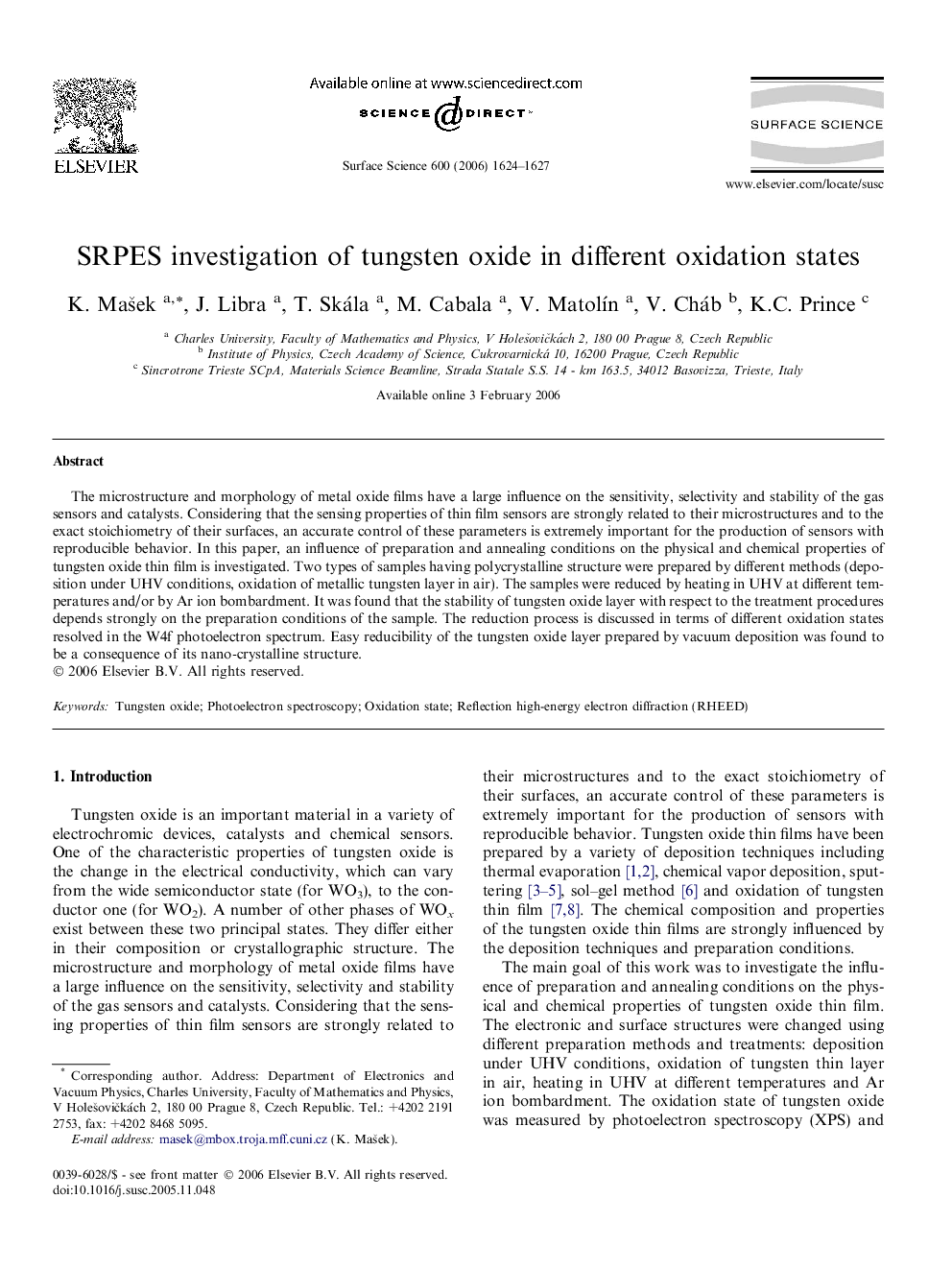| Article ID | Journal | Published Year | Pages | File Type |
|---|---|---|---|---|
| 5426904 | Surface Science | 2006 | 4 Pages |
The microstructure and morphology of metal oxide films have a large influence on the sensitivity, selectivity and stability of the gas sensors and catalysts. Considering that the sensing properties of thin film sensors are strongly related to their microstructures and to the exact stoichiometry of their surfaces, an accurate control of these parameters is extremely important for the production of sensors with reproducible behavior. In this paper, an influence of preparation and annealing conditions on the physical and chemical properties of tungsten oxide thin film is investigated. Two types of samples having polycrystalline structure were prepared by different methods (deposition under UHV conditions, oxidation of metallic tungsten layer in air). The samples were reduced by heating in UHV at different temperatures and/or by Ar ion bombardment. It was found that the stability of tungsten oxide layer with respect to the treatment procedures depends strongly on the preparation conditions of the sample. The reduction process is discussed in terms of different oxidation states resolved in the W4f photoelectron spectrum. Easy reducibility of the tungsten oxide layer prepared by vacuum deposition was found to be a consequence of its nano-crystalline structure.
